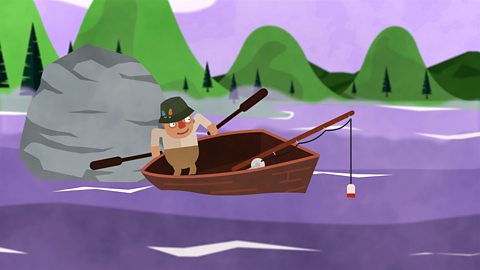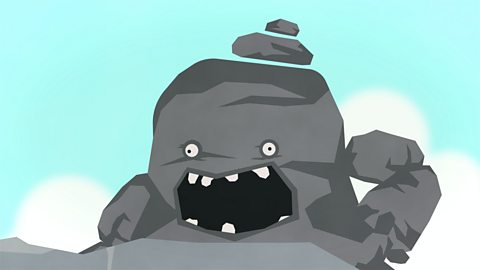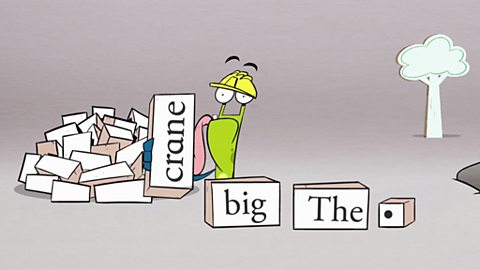SAILOR 1: We are never going to get up there, we need a conjunction.
Conjunctions are joining words. The main thing they do is join two different parts of a sentence.
NARRATOR: Well you can’t just force them together. You have to coordinate them.
You need a coordinating conjunction. To join groups of words that are about similar things.
SAILOR 1: Well here it says ‘I like cats. ‘
SAILOR 2: And here it says ‘he likes dogs’.
NARRATOR: Perfect, they’re both as important and talking about similar things. Let’s grab one of these coordinating conjunctions and drop it in.
They always go between the words you want to join. You can even join sentences with them.
SAILOR 1: I like cats but he likes dogs.
NARRATOR: I think you know what to do here…
Hey! Steady on drinking all that water!
That’s great, the water is calm and I am dry.
SAILOR 2: Argh!
NARRATOR: Oops, maybe not so dry after all.

Coordinating conjunctions
Conjunctions are joining words that link together parts of a sentence. The three main coordinating conjunctions are ‘and’, ‘but’ and ‘or’.
They can be used to join together two clauses in a sentence. However, the clauses need to make sense on their own. For example:
I had a terrible cold. I still went to work.
You can add the coordinating conjunction ‘but’ in between these causes so the sentence reads:
I had a terrible cold but I still went to school.
Remember though, you can often leave out the subject word in the second coordinating clause. For example:
I had a terrible cold but still went to school.
In this example you can remove the word 'I' from the second coordinating clause.

More on Grammar
Find out more by working through a topic
- count8 of 9

- count9 of 9

- count1 of 9

- count2 of 9
